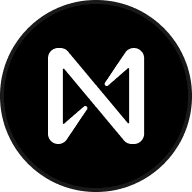Near Protocol price
in EURAbout Near Protocol
Disclaimer
OKX does not provide investment or asset recommendations. You should carefully consider whether trading or holding digital assets is suitable for you in light of your financial condition. Please consult your legal/tax/investment professional for questions about your specific circumstances. For further details, please refer to our Terms of Use and Risk Warning. By using the third-party website ("TPW"), you accept that any use of the TPW will be subject to and governed by the terms of the TPW. Unless expressly stated in writing, OKX and its affiliates (“OKX”) are not in any way associated with the owner or operator of the TPW. You agree that OKX is not responsible or liable for any loss, damage and any other consequences arising from your use of the TPW. Please be aware that using a TPW may result in a loss or diminution of your assets. Product may not be available in all jurisdictions.
Near Protocol’s price performance
Near Protocol in the news
Aptos (APT) dropped 5.3% and NEAR Protocol (NEAR) fell 4.4%, leading the index lower.
NEAR Protocol, a sharded layer 1 blockchain designed for high scalability, has achieved one million...
NEAR Protocol (NEAR) rose 6.5% and Aave (AAVE) jumped 6.4%, leading the index higher over the weekend.
Cronos (CRO) was also a top performer, up 7.6% from Monday.
Guides

Create a free OKX account
Fund your account
Choose your crypto
Near Protocol on OKX Learn
Near Protocol FAQ
Near Protocol is a cutting-edge Layer 1 blockchain platform, known for its scalability and rapid transactions, courtesy of its sharding mechanism.
Near Protocol incorporates sharding, a technique that divides the network into smaller segments (or shards), thereby optimizing transaction speeds and overall network performance.
Easily buy NEAR tokens on the OKX cryptocurrency platform. Available trading pairs in the OKX spot trading terminal include NEAR/BTC, NEAR/USDC and NEAR/USDT.
You can also buy NEAR with over 99 fiat currencies by selecting the "Express buy" option. Other popular crypto tokens, such as Bitcoin (BTC), Ethereum (ETH), Tether (USDT), and USD Coin (USDC), are also available.
Additionally, you can swap your existing cryptocurrencies, including XRP (XRP), Cardano (ADA), Solana (SOL), and Chainlink (LINK), for NEAR with zero fees and no price slippage by using OKX Convert.
To view the estimated real-time conversion prices between fiat currencies, such as the USD, EUR, GBP, and others, into NEAR, visit the OKX Crypto Converter Calculator. OKX's high-liquidity crypto exchange ensures the best prices for your crypto purchases.
Dive deeper into Near Protocol
In 2020, the decentralized finance (DeFi) sector saw significant growth, leading to a surge of decentralized applications (dApps) on the Ethereum network. This surge underscored some of Ethereum's scalability challenges, pointing to the necessity for a more robust solution. Responding to this need, Near Protocol emerged as a community-oriented cloud computing platform aiming to mitigate these constraints.
What is Near Protocol
NEAR is a community-driven cloud computing platform that adopts the Proof of Stake (PoS) consensus mechanism. With its user-friendly interface and smart contract capabilities, NEAR seeks to empower developers to effortlessly design and deploy innovative dApps and DeFi solutions. Furthermore, its unique design allows users to engage with dApps and smart contracts without requiring a wallet.
The Near Protocol team
Erik Trautman, an entrepreneur boasting Wall Street experience and founder of Viking Education, pioneered NEAR. Alongside him are co-founders Illia Polusukhin, a former Google employee, and Alexander Skidanov, an ex-Microsoft staffer. Under their leadership, NEAR has amassed a skilled cohort of developers, featuring International Collegiate Programming Contest gold medalists.
How does Near Protocol work
Utilizing sharding technology, NEAR improves transaction speed and volume. By distributing its computational load across multiple shards, each node runs only the relevant code for its assigned shard, optimizing scalability. NEAR's Blockchain Operating System (BOS), grounded in JavaScript, ensures developers can use a familiar programming language. The platform provides ready-made components, facilitating quicker product development. Moreover, users can swiftly access the system without needing to own or use cryptocurrency.
NEAR tokenomics
NEAR's native token, NEAR, was launched on October 13, 2020, with a total supply of 1 billion tokens. The token offers several use cases, from paying transaction gas fees to staking for rewards. Additionally, it plays a role in governance, data storage, and access to services and applications on the Near Protocol.
NEAR distribution
NEAR was distributed in the following way:
- 17.2 percent: Community grants and programs
- 15.23 percent: Seed round
- 14 percent: Core contributors
- 11.76 percent: Early ecosystem development
- 11.4 percent: Operation grants
- 12 percent: Community sales
- 10 percent: Foundation
- 8.41 percent: Venture round
Near Protocol: The road ahead
Created for robustness and efficiency, NEAR offers a platform free from intermediaries, permitting users to independently publish and host applications. This commitment to progress is reflected in their Q3 2023 announcement, heralding phase 2 of sharding to enhance the sharding process and improve scalability.

































